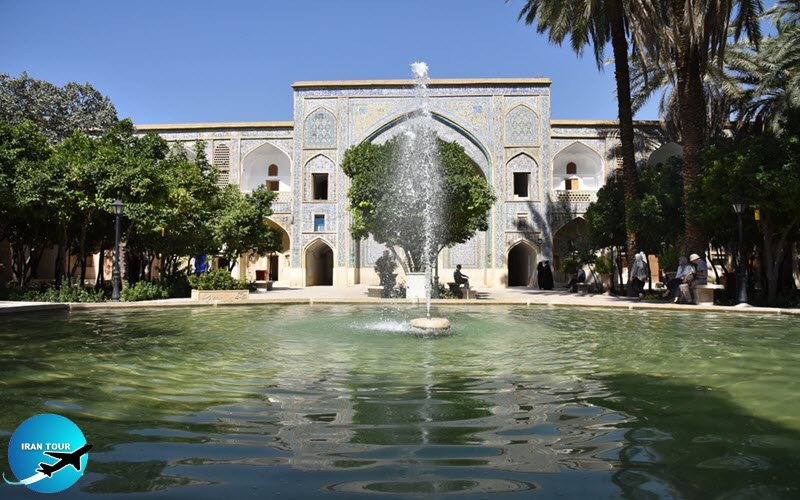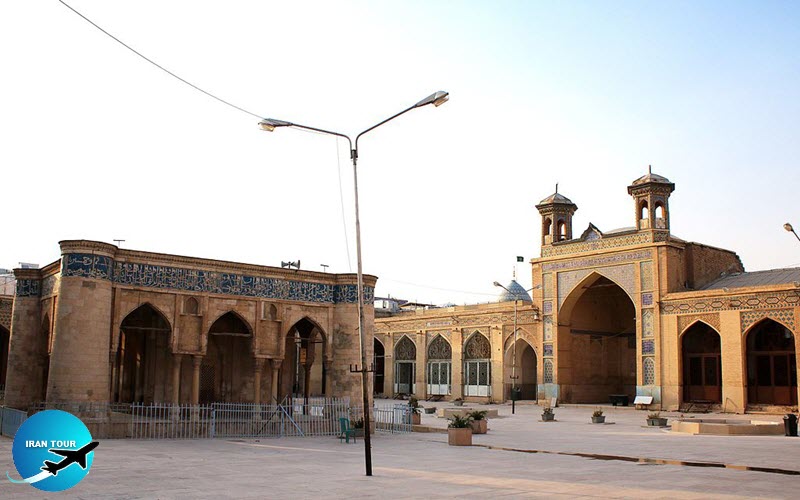Copyright 2020 - 2021 irantour.tours all right reserved
Designed by Behsazanhost
Shiraz under the Safavid, Afghan,and Afsharid Rulers
Shiraz under the Safavid, Afghan, and Afsharid Rulers
The fortunes of Shiraz revived somewhat during the Safavid period, first under the governorship of Sultan Khalil Zulqadr (ruled during 1505-1520); and particularly when Shah Abbas's Commander-in-Chief, Allahverdi Khan, and after him his son Imam Qoli Khan, was appointed Governors-general of Fars. Together, they held this post for thirty-nine years, until 1634. During this period, Shiraz was titled Dar al-Elm (“Center of Learning”), for its numerous educational establishments and men of letters. European travelers who saw the city during this period remarked upon the extent and variety of its markets, its ateliers producing exquisite objects of art, and its remarkable gardens.
 |
| Khan School Shiraz Safavid Era |
Many earlier buildings were repaired, and new structures were created in the much-expanded city. Among the most conspicuous relics of the Safavid period in Shiraz are the Khan Madreseh and the Khan Bridge. Most of the Shiite shrines were considerably refurbished during this period. In contrast, the Sunnite sanctuaries and khaneqahs generally declined. Unfortunately, many Safavid buildings were ruined in the floods of 1630 and 1668. both caused by the coincidence of heavy rains with the melting of snow on the mountains. The inundation of 1668 was followed by a pestilence, which left the town in a deplorable condition. The situation was aggravated when the town was besieged by the Afghans, who had overrun much of the country and captured its capital, Esfahan. More than 100,000 inhabitants of Shiraz are said to have died in a battle with the Afghans, or in the famine and plague which broke out in the occupied city.
 |
| Atiq Mosque |
The city was liberated in 1729 by Tahmasp Qoli, the future Nader Shah. He reestablished peace and security, and ordered the damage done to the city to be repaired. Among his donations was a huge golden lamp on a long silver chain, contributed to the Shah Cheragh Mausoleum. (This lamp was sold, and the proceeds used for the reconstruction of the building after the devastating earthquake of 1824). Unfortunately, the peace did not last long. In 1744, Taqi Khan Shirazi, the ambitious Governorgeneral of Fars, rebelled against Nader Shah, and announced himself an independent ruler. Nader at once sent troops to quell the revolt, and the city fell after a siege lasting four and a half months. Shiraz was then sacked by the soldiery, and two grim towers were built of the heads of its slaughtered citizens. To add to these horrors, plague broke out and took the lives of thousands of people. The sufferings of the unfortunate city continued until it was chosen as the country's capital city during the Zand period, when its fortunes dramatically changed.
- Details
- Category: Shiraz Tourism